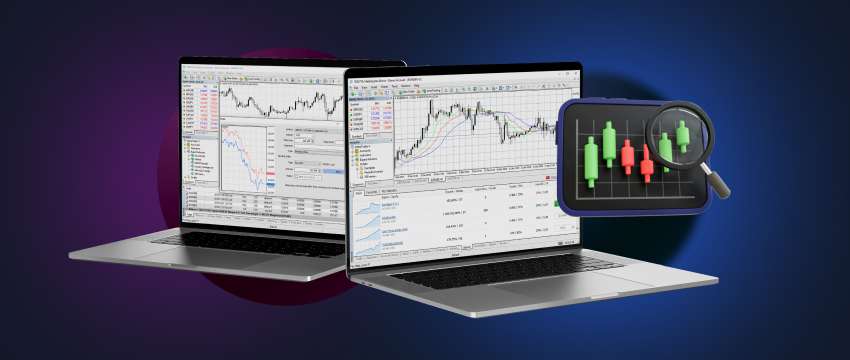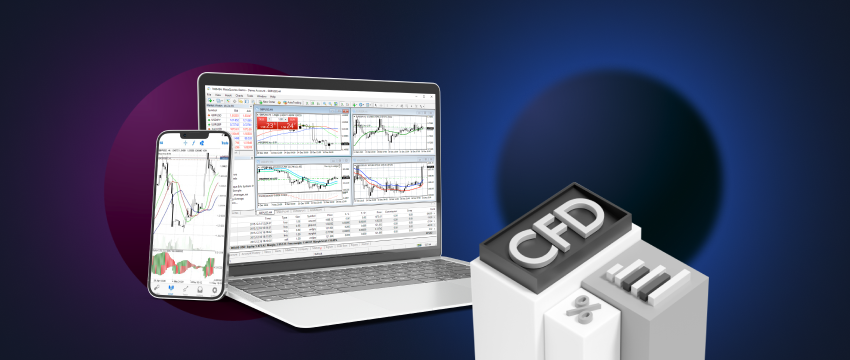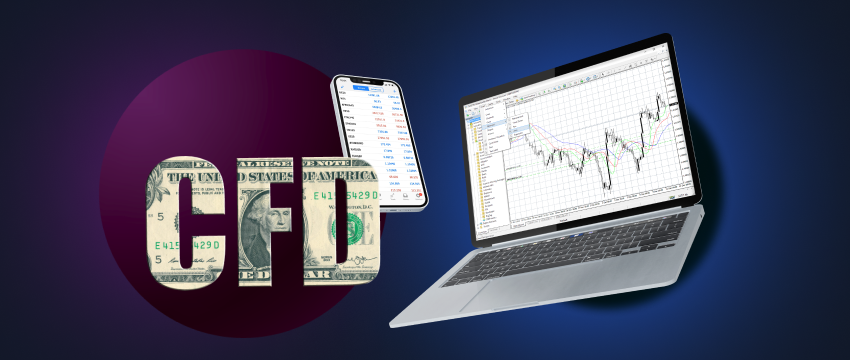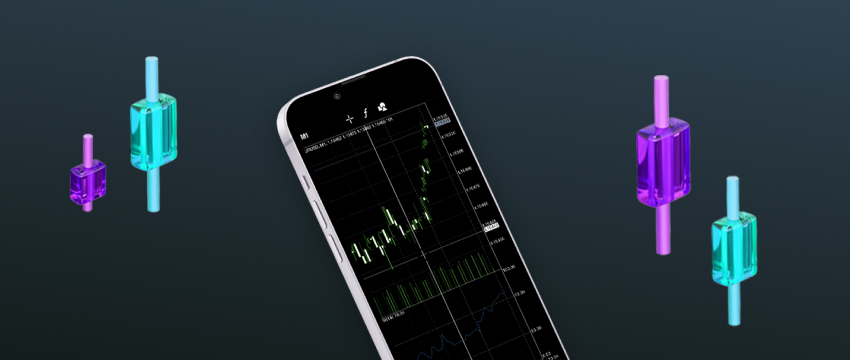Contracts for Difference or CFD trading is a popular means of trading a variety of underlying assets. It offers CFD traders a way to engage with multiple financial markets, diversify their portfolios, and increase trading opportunities. But does CFD trading cost anything? Well, yes and no. You see, the question is nuanced because while CFD trading doesn’t cost a specific amount, it’s not to say that costs aren’t incurred.
CFD trading may incur some of the largest losses for retail investors. In this blog, we’ll discuss what adds to the appeal of CFD trading, and what can be done to mitigate the risks as well as the costs associated with this form of trading.
1. CFDs are highly leveraged
Contracts for Difference enable traders to make use of leverage. CFDs are some of the most highly leveraged financial instruments. But what does this mean in practice? Well, it allows a trader to execute a larger trade with a relatively small initial deposit. Essentially, the trader will “borrow” funds from their broker which they will use to enter and manage a larger position. In this way, the trader can increase their buying power.
At such time that the leverage position is closed or exited, the borrowed funds are returned to the broker, and the trader will either make a profit or be liable for any loss. While leverage can magnify profits, it can also do the same for losses, especially if the market moves against the trader. As a result, the trader may lose more than their initial investment. This makes risk management measures like stop-loss or take-profit orders essential to safeguard your funds.
CFD margin
For a leveraged CFD position to be accessed, the trader must put down a fraction of the value of the trade as a deposit in your trading account. The deposit is called the margin. For the leveraged position to stay open, the trader must make sure they have sufficient funds in their account to cover the margin at all times. If the trader can’t cover their margin requirement and the position is at risk of being closed, a margin call is triggered.
At this point, the broker will typically notify the trader to either deposit additional funds into their account or reduce the size of the open position.

2. Trading CFD portfolio diversification
CFD trading offers traders a way of diversifying their trading portfolios. This is because CFDs give traders access to a large variety of underlying assets, be this forex, saham, logam, komoditi, etc. In this way, they can pick and choose their preferred asset, and take advantage of the opportunities that different markets present.
Additionally, traders can also open a wide range of positions across multiple asset classes, rather than sticking to just one. In this way, by not investing all one’s funds into one specific position, should a position move in an adverse direction, the loss of all one’s funds is mitigated. Instead, the risk is spread across the positions.
3. Going long or short
Contracts for Difference offer traders the ability to make gains from rising and falling markets. This is because the trader can opt to go long or short:
- By going long, a trader seeks to purchase an asset that they anticipate will increase in value. Going long is considered to be a bullish strategy.
- Adversely, by going short, a trader looks to sell an asset with the expectation that its value will decrease. Going short is thought to be a bearish strategy.
The outcome of whether one goes long or short will determine the level of profit or loss a trader will incur. It therefore requires proper analysis and careful speculation, for an informed trading decision to be made.
4. High market liquidity
Seeing as CFDs are highly leveraged financial instruments and the underlying markets are usually highly liquid. Combined with tight spreads and little slippage, traders are generally able to open and close positions considerably quickly and easily.
CFD markets are also usually open 24/5, enabling traders to respond to global news and economic releases at the drop of a hat. The ability to react quickly to market developments will help ensure a trader can enter or exit trades exponentially faster, thereby further mitigating the risk of capital loss if the markets look to be moving adversely.
5. Speculative trading without ownership of the asset
CFDs are unique in that they offer a way for a trader to agree with a broker to speculate on the price movement of different underlying assets without having to take ownership of those assets. This in turn makes CFD trading more cost effective than traditional trading. By not having to own the asset, the trader does not incur the cost of having to store it or insure it.

Best ways to manage risks associated with CFD trading
Due to the high level of leverage and market volatility CFD traders have to contend with, having proper risk management tools in place to incur less costs (or loss of capital) is vital. Let’s look at what some of those tools are:
Ongoing learning
- Understanding how the CFD market operates, how leverage can result in substantial losses, and the factors that impact the price of underlying assets, requires educating yourself. Have a plan in place that includes ongoing learning to ensure you remain skilled and continuously enhance your expertise. There are plenty of educational resources that exist across the internet, be this blogs, podcasts, webinars, seminars, ebooks, regular books, guides, courses, and so much more. Pick your preferred resource and take the time to keep learning about CFD trading, new market trends, technological advancements, etc. In this way, you’ll stay on top of your CFD trading game.
Make use of a demo trading account.
- Another way to boost your skills to be able to better manage risk is by practicing CFD trading using a demo trading account. A demo account will provide you with a simulated trading environment in which to test your CFD trading strategies, from the simplest to the most complex. In this way, you’ll be able to refine your intended plan, identify strengths as well as weaknesses, and make any tweaks if required. Using virtual funds, you can enter and exit trades and gauge outcomes without the risk of losing your capital. You can also hone your ability to use technical and fundamental analysis to be able to make better-informed trading decisions once you move to live to trade.
Build a risk management plan
- Before engaging in any form of trading, be this CFD trading or any other, having a definitive risk management plan in place is key. This plan should align with the level of risk you’re prepared to take on and the budget you have to work with. It also needs to integrate the risk management techniques that you’ll use to mitigate loss or protect your profits. This includes stop-loss and take-profit orders. These are highly important tools in the world of CFD trading and play a pivotal role in helping you hold onto your money as best you can.

Why become a CFD T4Trade trader?
T4Trade is a powerful broker that appeals to different traders in countries across the globe. This is largely due to its high-quality service offering, ranging from a choice of tailored account types, flexible leverage, quick deposits, and withdrawals, fast execution of orders, and competitive spreads. An engaging and highly skilled client support team is also available 24/5 to help traders with all their queries.
Penafian: This material is for general informational and educational purposes only and should not be considered investment advice or an investment recommendation. T4Trade is not responsible for any data provided by third parties referenced or hyperlinked in this communication.



